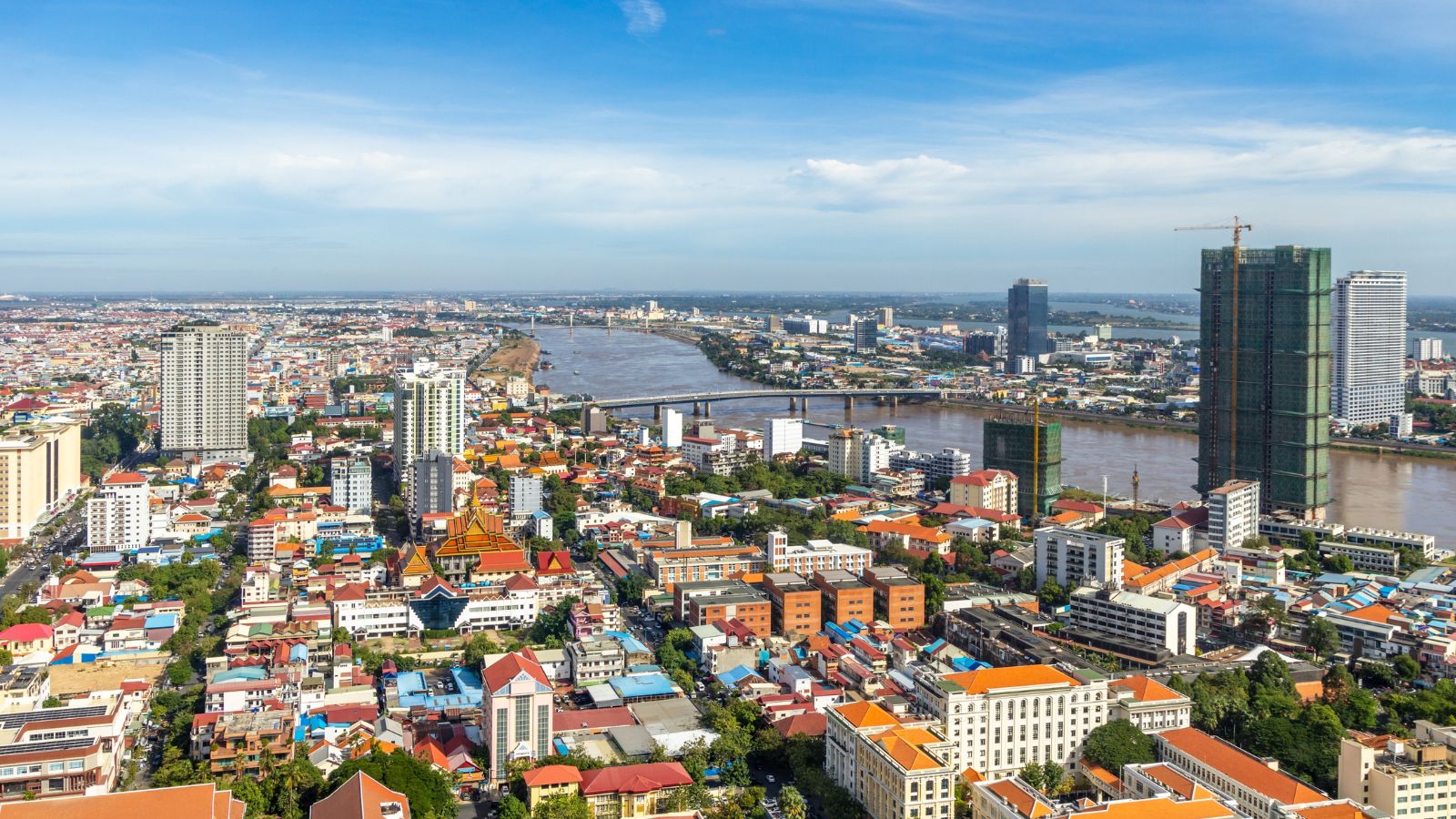Even though the shifts may not always register in everyday conversation, however, Canada’s economy is quietly changing in big ways. While many people still think of Canada as a resource-rich nation with close ties to the U.S., there’s a lot more going on beneath the surface. In this article, we explore 21 ways Canada’s economy is changing without you realizing it.
Diversifying Trade Beyond the U.S.

Canadians have relied heavily on the U.S. market for decades, with about 80 percent of exports headed south. However, given the risks of being too dependent on one neighbour, especially with threats of tariffs in the air, Canada is now working to widen its trade relationships. Whether it’s forging deals with Asian or European partners, the country is investing heavily to reduce reliance on the U.S. while opening new markets for Canadian goods and services.
Dealing with Tariff Threats

The possibility of the U.S. imposing a 25% tariff on Canadian products has forced Canadian leaders to rethink their economic strategy. Instead of waiting to be hit by these tariffs, businesses and policymakers are focusing on strengthening domestic markets and encouraging greater self-reliance.
Rethinking Government Spending and Debt

Canada has spent a lot since the COVID-19 pandemic, as governments worldwide have, to support people through hard times. Although this spending helped many get through the crisis, it also led to higher public debt. Now, Canadian policymakers are balancing the situation. They are investing in key areas like infrastructure, healthcare, and social services while finding ways to manage and eventually reduce that debt over the long term.
Struggling to Boost Productivity

One stubborn problem facing Canada is that its productivity is lagging behind that of its peers. Over the years, Canadian workers haven’t been producing as much as those in other G7 nations, and that affects wages and overall economic strength. To fix this, the Canadian government is heavily investing in research and development, technology, and training programs that could help make its workers more efficient and competitive.
Moving from Manufacturing to Services

In the past, manufacturing played a major role in the country’s prosperity. However, the economic landscape in Canada has shifted. Today, the service sector, which includes everything from finance to IT, is taking center stage. This shift brings opportunities and challenges, as services don’t always offer the same kind of high-wage, high-productivity jobs that manufacturing once did.
The Housing Crunch

If you’ve ever tried to buy a home in Toronto, Vancouver, or some smaller cities, you know how challenging it can be. In recent years, housing prices have skyrocketed while wages haven’t kept up, forcing many households to take on more debt. This crisis affects everyday spending and quality of life. Canadians are feeling the pinch, and the government is under pressure to find solutions that add more affordable homes to the market.
Demographic Shifts and Immigration

Canada’s population is changing rapidly. On one hand, the country’s native population is aging, while on the other, a steady flow of immigrants keeps the workforce young and dynamic. Although immigration is one of Canada’s greatest strengths for economic growth, integrating newcomers efficiently remains a challenge. The government is working to match foreign credentials with job requirements to ensure immigrants contribute fully to the economy.
Growing Cities and the Rise of Mega-regions

Urban centers like Toronto, Montreal, and Vancouver are growing faster than ever. As more people flock to these cities, they are expanding into so-called “megaregions” areas where multiple nearby cities blend into one massive economic zone. This trend brings the promise of increased productivity and innovation, but it intensifies challenges such as traffic congestion, pollution, and pressure on housing.
More Public Sector Jobs

In recent years, government jobs have been growing faster than private-sector employment. More people are working in the public sector, whether in health, education, or local government, and these roles come with higher wages and benefits. While this trend can improve service delivery and stability, it raises questions about whether public spending will crowd out private investment in the long run.
Investing in Better Infrastructure

Canada’s vast size makes moving goods and people efficiently a constant challenge. In the past, outdated regulations and slow permitting processes have made internal trade a headache. Today, from ports and railways to digital networks, efforts are focused on modernizing infrastructure to speed up the movement of products and people.
Energy in Transition

Canada is blessed with abundant natural resources like oil, gas, and minerals. However, global pressures to reduce carbon emissions have pushed the energy sector toward renewable solutions. Canada is investing heavily in green technologies and clean energy projects so that its resource wealth can be used in a more sustainable, long-term manner. This transition is about saving the environment and ensuring economic competitiveness in a changing world.
Attracting Foreign Investment

Foreign direct investment has long been a base of Canada’s economy. Canada is working on making its business climate more inviting to keep attracting outside capital. Canada is doing this by streamlining regulations, cutting red tape, and adjusting tax policies to create a more predictable, stable environment for investors. In turn, these investments help boost jobs and stimulate local industries.
Overhauling Tax and Regulatory Systems

There’s a growing belief that Canada’s tax and regulatory frameworks need a makeover. The country’s complicated system can discourage domestic investment and stifle innovation. The government is considering reforms to simplify taxes and regulations, making it easier for businesses to grow and for new ideas to flourish.
Changing Consumer Behavior and Savings

From mortgages to groceries, Canadians are now facing higher debt and rising costs in everyday life. This indicates that households have less money to spend on non-essential items and may save less, ultimately affecting consumer demand. As these changes ripple through the economy, businesses and policymakers alike have to adapt to these new spending patterns.
Renewing the Focus on Productivity

Canada’s productivity lags behind that of its southern neighbor and other advanced economies. To counter this, Canada has engaged in an all-hands-on-deck effort. The country is increasing investments in training, new technologies, and research, which are a part of a broader push to lift productivity levels. Higher productivity makes each hour of work generate more value, leading to higher wages and better standards of living.
Embracing Digital Transformation

Canada is looking to harness digital innovations to spark economic growth. Federal investments in artificial intelligence, digital infrastructure, and computing power are designed to foster a modern, tech-enabled economy. This digital transformation is expected to create high-quality jobs, promote innovation, and help Canadian industries compete on the global stage.
Climate Change

While climate change poses risks such as extreme weather and infrastructure damage, it also opens up new possibilities. For instance, a warmer climate extends Canada’s growing season or opens up new regions for exploration and resource extraction. However, to tap into these benefits, Canada must invest in sustainable technology and adapt its infrastructure for a changing climate.
Shifts in the Labor Market

Canada’s labor market is facing rising unemployment in some sectors, creating uncertainty. On the other hand, the fast-growing public sector and demands for skilled workers are putting pressure on wages. Policymakers must ensure that wage growth keeps pace with the cost of living while providing a stable environment for job seekers and employers.
The Politicization of Economic Debate

Economic policies have become a hot topic in Canadian politics. Debates over trade, taxation, immigration, and public spending are now central to political discussions, with different parties offering starkly different visions for the country’s future. Whether it’s opposition leaders pushing for sharper reforms or government officials defending gradual change, the political landscape is reflecting a growing concern about the country’s economic direction.
Adapting to Global Supply Chain Shifts

Canada’s economy has been deeply integrated with global supply chains for decades. However, recent global events from the COVID-19 pandemic to geopolitical tensions have exposed vulnerabilities in those networks. As a result, businesses are working to diversify their supply chains, invest in domestic processing, and reduce their reliance on any single source of raw materials.
Revising Government Spending Priorities

In today’s complex economic environment, the government is constantly weighing how best to allocate its resources. In recent years, there has been a shift towards investing in areas that promise long-term benefits: health care improvements, early childhood education, digital innovation, and sustainable infrastructure projects. This reorientation of spending is aimed at short-term relief and setting the stage for a more resilient, productive, and competitive economy over the coming decades.
Conclusion

These 21 changes are a call to action. They remind us that the economy is not a static entity but a living, evolving system that responds to global events, domestic policies, and the everyday choices of its people. Canadians can steer these changes toward a future that benefits everyone through informed debate, smart policymaking, and collective effort.
22 Times Canadian Ingenuity Left the U.S. in the Dust

When people think of innovation, they often picture Silicon Valley. However, Canada has a history of innovation, too. Whether it’s redefining sports, revolutionizing medicine, or just showing America up at its own game, Canadian inventors, thinkers, and dreamers have had their fair share of mic-drop moments. Here are 22 times Canadian ingenuity left the U.S. in the dust.
22 Times Canadian Ingenuity Left the U.S. in the Dust
